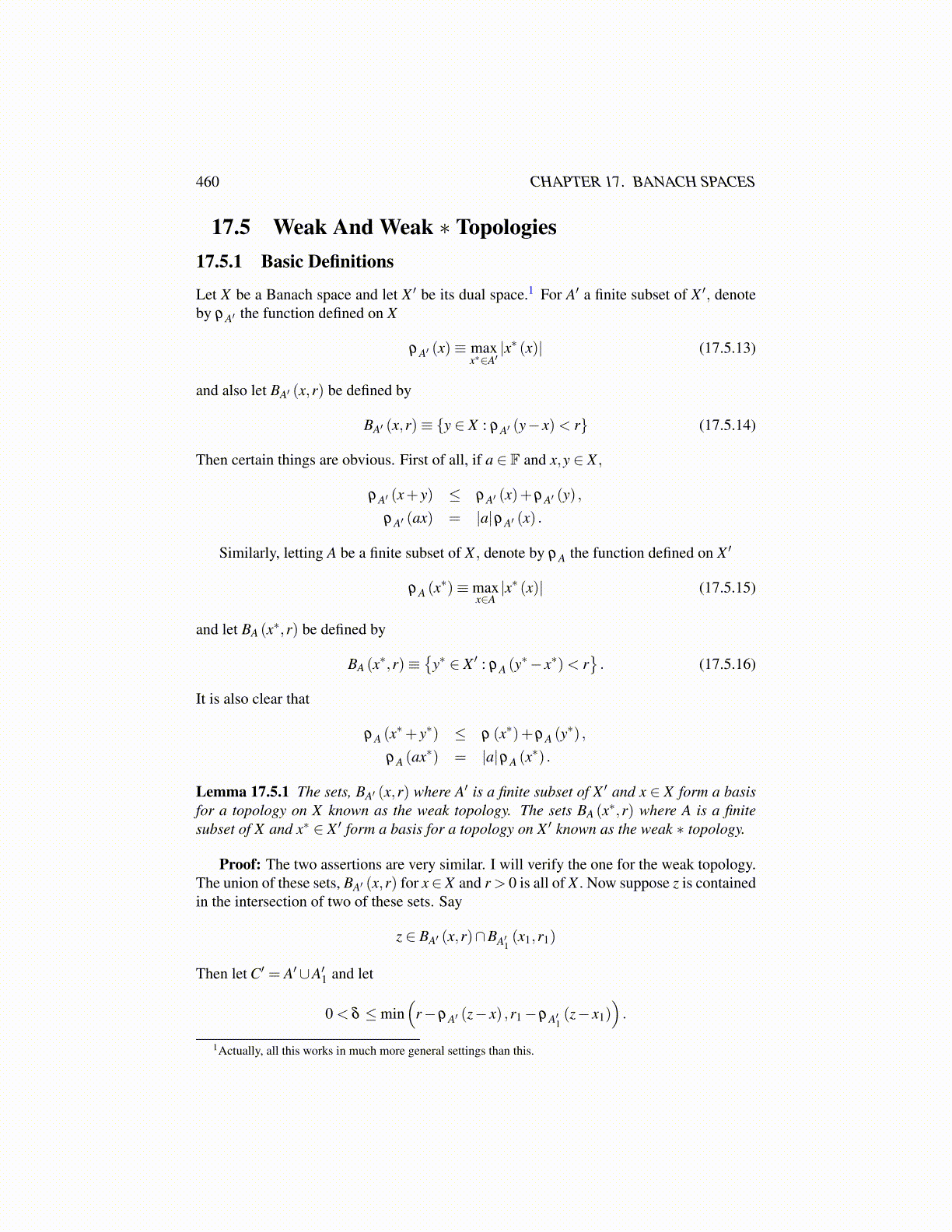
460 CHAPTER 17. BANACH SPACES
17.5 Weak And Weak ∗ Topologies17.5.1 Basic Definitions
Let X be a Banach space and let X ′ be its dual space.1 For A′ a finite subset of X ′, denoteby ρA′ the function defined on X
ρA′ (x)≡ maxx∗∈A′|x∗ (x)| (17.5.13)
and also let BA′ (x,r) be defined by
BA′ (x,r)≡ {y ∈ X : ρA′ (y− x)< r} (17.5.14)
Then certain things are obvious. First of all, if a ∈ F and x,y ∈ X ,
ρA′ (x+ y) ≤ ρA′ (x)+ρA′ (y) ,
ρA′ (ax) = |a|ρA′ (x) .
Similarly, letting A be a finite subset of X , denote by ρA the function defined on X ′
ρA (x∗)≡max
x∈A|x∗ (x)| (17.5.15)
and let BA (x∗,r) be defined by
BA (x∗,r)≡{
y∗ ∈ X ′ : ρA (y∗− x∗)< r
}. (17.5.16)
It is also clear that
ρA (x∗+ y∗) ≤ ρ (x∗)+ρA (y
∗) ,
ρA (ax∗) = |a|ρA (x∗) .
Lemma 17.5.1 The sets, BA′ (x,r) where A′ is a finite subset of X ′ and x ∈ X form a basisfor a topology on X known as the weak topology. The sets BA (x∗,r) where A is a finitesubset of X and x∗ ∈ X ′ form a basis for a topology on X ′ known as the weak ∗ topology.
Proof: The two assertions are very similar. I will verify the one for the weak topology.The union of these sets, BA′ (x,r) for x∈ X and r > 0 is all of X . Now suppose z is containedin the intersection of two of these sets. Say
z ∈ BA′ (x,r)∩BA′1(x1,r1)
Then let C′ = A′∪A′1 and let
0 < δ ≤min(
r−ρA′ (z− x) ,r1−ρA′1(z− x1)
).
1Actually, all this works in much more general settings than this.